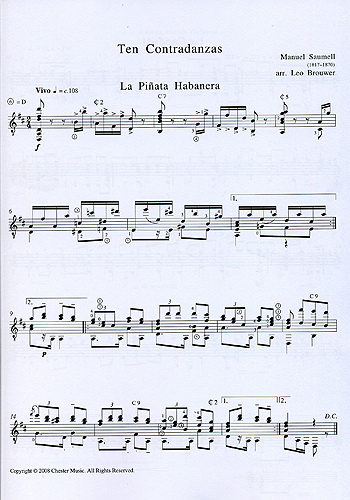7.2 Main musical genres in the first half of the 19th century (1800-1868).

The European music performed in Cuban music from the beginning of the 19th century began to become creolized. As Black musicians joined the orchestra and adapted European music to its African roots, new musical genres emerged, unique to Cuban music. Cuban music between 1822 and 1868 maintained the tradition of titles with Creole colors, and in its formal aspect, one can observe the sedimentation of a Cuban characteristic that culminated in Manuel Saumell’s Contradanzas y Danzas.
What we call Cuban Contradanza is an Antillean and even continental genre, of which we have examples from various islands and countries. Ultimately, it was a universal dance. In each place, the Contradanza adapted to new venues, aesthetics, and temperatures. In Cuba, the Contradanza drew on popular music and incorporated idioms from the songs that the people improvised and sang, thus becoming popular songs. The seeds of Cuban musical genres that came later are found in the Contradanzas.
The Contradanza reigned for almost thirty years, giving way to the beautiful Danza, identical in form to the previous one, but with extraordinary melodic and rhythmic richness. The Danza was exported from Cuba in the mid-19th century, taking root in many parts of the world under various forms and names.
The publications of the Musical Newspaper included diverse genres of vocal music, including duets, nocturnes, songs, and romances, accompanied by harp and fortepiano. They also included instrumental music, including overtures, rondoes, waltzes, contradanzas, and minuets for guitar, flute, harp, and fortepiano. Cuban magazines covering the period from 1822 to 1868 published contradanzas, waltzes, galopadas, rigodons, pulleys, mazurkas, songs, and medleys. All genres and forms were written for piano, flute, voice, piano, and guitar. We can only note an evolution toward an emphasized criollismo in the Contradanza and the Canción. These two genres prevailed in the salons and magazines of 19th-century Cuba.








